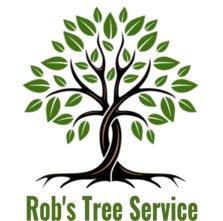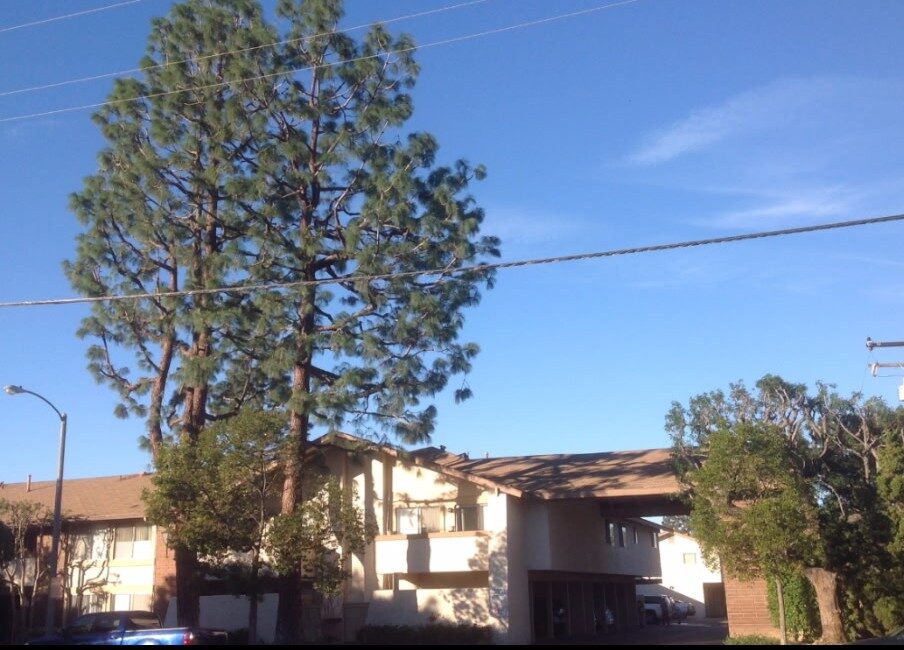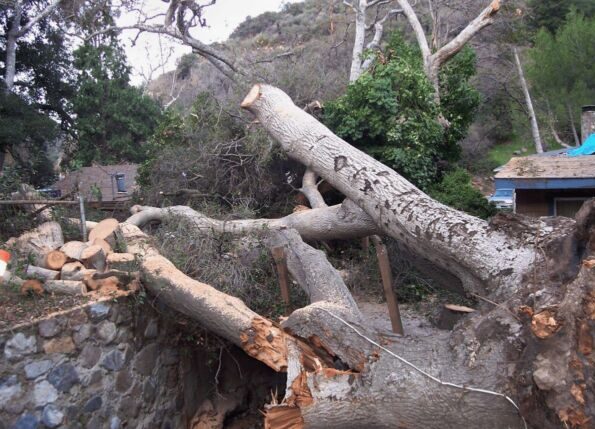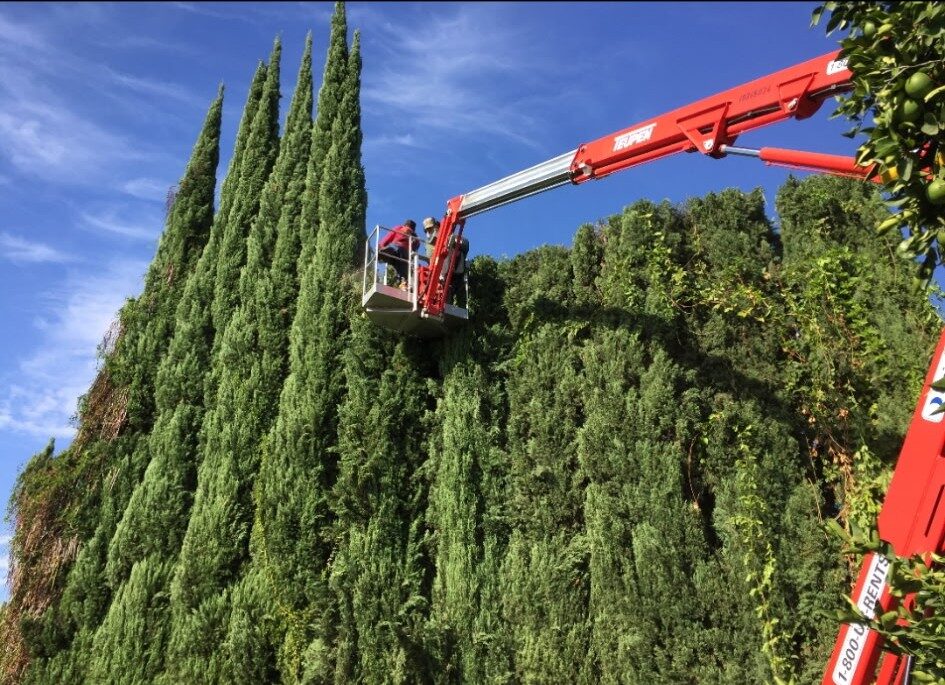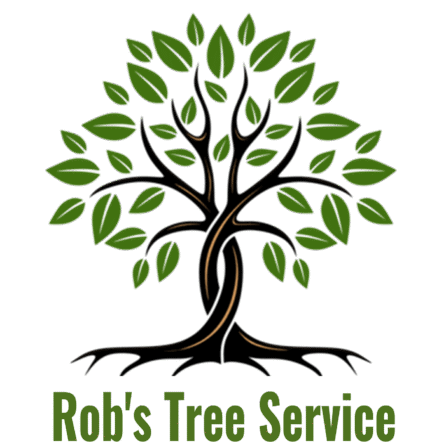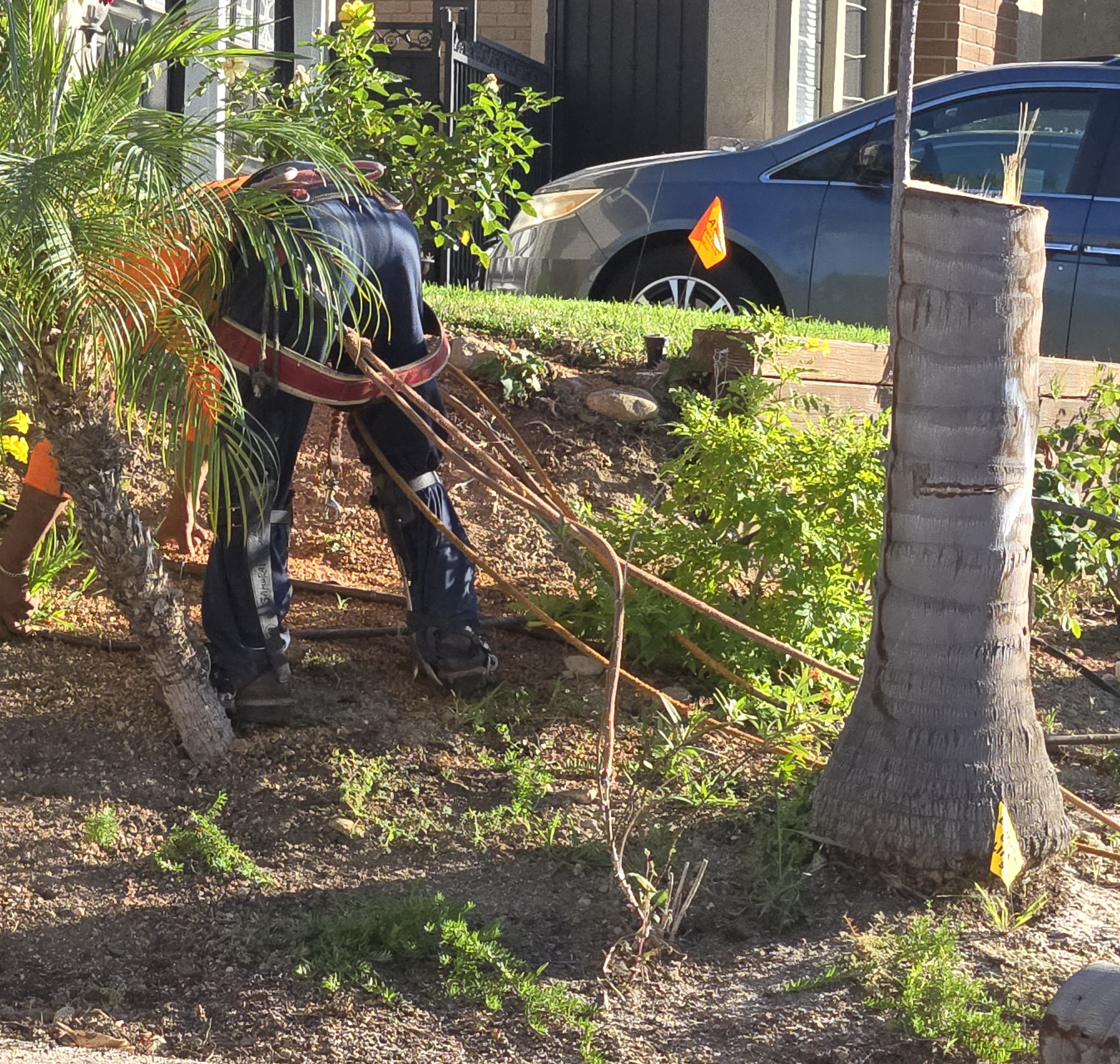
Residential & Commercial Tree Removal Services
Our goal is to save every tree and return it to vibrant health. However, when this is impossible, dead or diseased branches should be removed immediately to prevent accidents and maintain the health of your trees. We have the equipment and experience to remove trees safely and stumps of any size. Tree removal can be challenging and requires professionals who use their expertise, knowledge, and safety equipment to assess possible risks.
Tree Removals, such as those involving nearby delicate landscaping or fragile structures that require protection during the process, are our specialty. We can remove trees close to walls or structures, on a slope, or in hazardous conditions.
Reasons for Tree Removal
Knowing when a tree needs to be removed is crucial for safety and the health of your landscape. Here are some key indicators:
Structural Damage
Cracks and splits: Vertical cracks in the trunk, according to johnsonopstreecare.com, can compromise the tree’s structural integrity, especially when combined with internal decay.
Hollow trunk: A hollow trunk or cavities within the tree signify internal decay and weakening.
Significant lean: While a slight lean might be natural, a new or dramatic lean, says an arborist, should investigate Lawn Love, or signs of the tree uprooting.
Storm damage: Severe damage to the trunk or large broken branches can leave a tree unstable and susceptible to further damage or collapse.
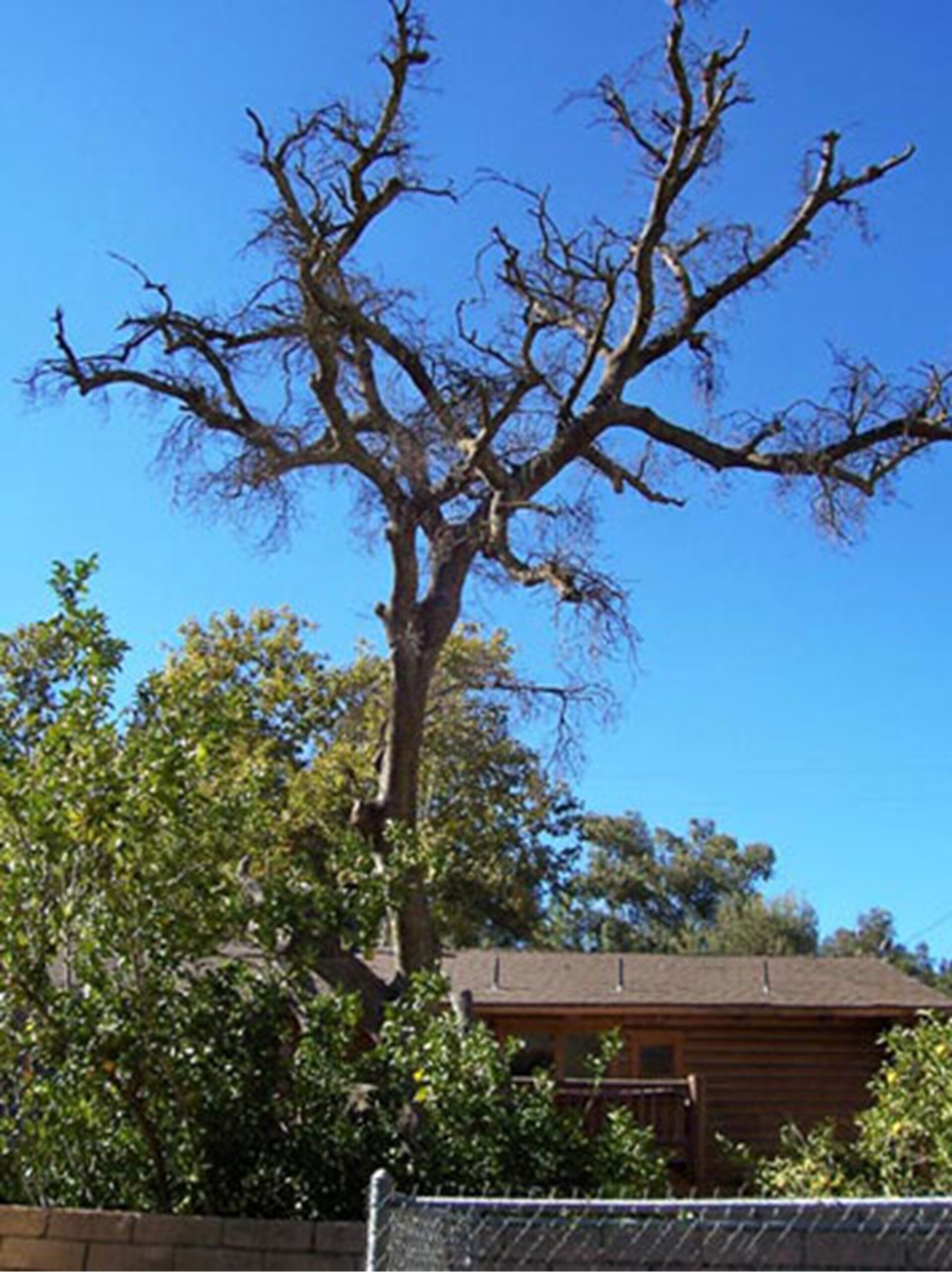
.
Tree Removal, Dead Oak Tree, Modjeska Canyon
Signs of disease or Pests
Decaying or peeling bark: Abnormal peeling or areas of dead bark can indicate disease or internal rot.
Fungal growth: Mushrooms or other fungal growth on the trunk or around the tree’s base suggest root rot or decay.
Insect infestation: Holes in the bark, sawdust around the tree’s base, or visible insects may indicate an infestation that could be severely weakening the tree.
Leaf discoloration or abnormalities: Wilting, discoloration, or significant leaf loss outside the normal seasonal cycle can be a sign of disease.
Dead or Dying Tree
No new growth: A lack of new leaf or bud growth in spring indicates the tree is likely dead or dying.
Brittle branches: Dead branches are brittle and can snap easily, posing a significant hazard.
Lack of flexibility: Dead branches will snap rather than bend when tested.
Other Safety Concerns
Hazardous location: If a tree is too close to your home, power lines, or other structures, its potential fall could cause significant damage or injury.
Blocking new growth: A large tree might be inhibiting the growth of other plants or grass you wish to cultivate.
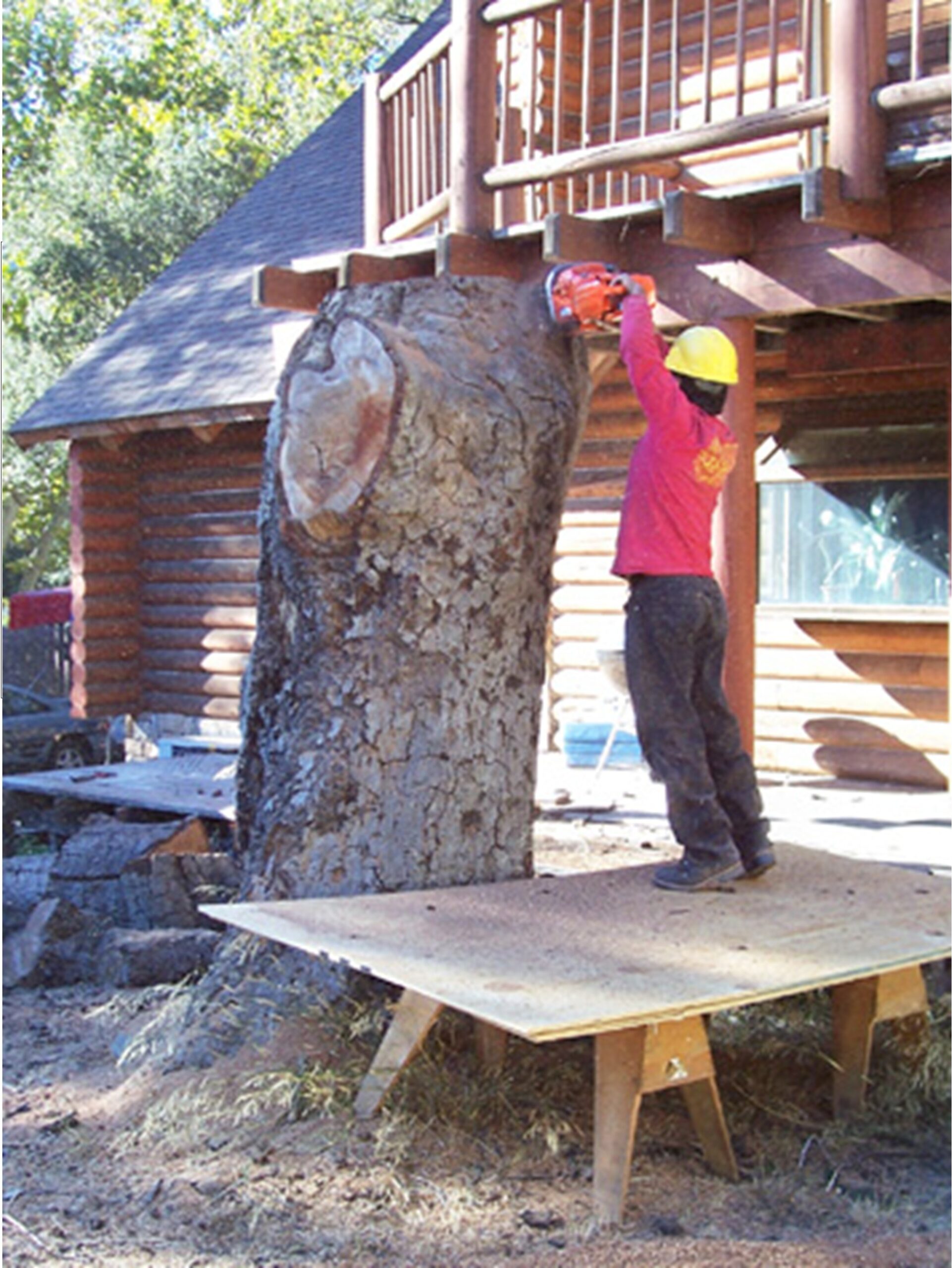
Tree Removal Benefits
Tree removal can offer several benefits, particularly when addressing problematic or potentially hazardous trees.
Safety and Property Protection:
- Hazard prevention: Removing diseased, dead, or damaged trees significantly reduces the risk of falling branches or the entire tree collapsing, which could cause severe damage to your home, vehicles, or even pose a threat to people.
- Protection from property damage: Tree roots can damage foundations, driveways, and underground utilities. Removing such trees can prevent or mitigate these issues.
- Reduced pest infestations: Dying or diseased trees can attract pests and diseases that may spread to other healthy trees or even infest your home. Removing these trees helps prevent such problems.
Aesthetics and Practicality:
- Enhanced curb appeal: Removing unsightly or overgrown trees can significantly improve the overall appearance of your property and increase its value.
- Creating space: Removing trees can free up space for landscaping projects, outdoor living areas, or other desired additions to your property.
- Better views: Removing trees that obstruct desirable views can enhance your landscape’s overall appeal.
- Increased sunlight: Removing trees that cast excessive shade can allow more sunlight to reach other plants or areas of your yard.
Before Tree Removal & Stump Grinding, Call DigAlert
DigAlert, also known as Underground Service Alert of Southern California (USA/SC), is a free service that helps prevent damage to underground utilities during tree and stump removal. It facilitates communication between tree companies and underground facility owners by providing a centralized point of contact for notifying them about planned digging projects. By contacting DigAlert before digging, individuals can ensure that underground lines are marked, preventing potentially costly and dangerous accidents.
Here’s why DigAlert is crucial:
Preventing Damage to Underground Utilities
Safeguarding Essential Services: Beneath the ground, unseen, lies a complex network of gas lines, water lines, electricity cables, and communication lines. Accidentally striking these lines during excavation can cause severe service disruptions for communities and individuals.
Avoiding Costly Repairs and Delays: Damage to utility lines, such as gas or fiber optic cables, can lead to substantial repair costs and project delays, impacting both personal finances and public infrastructure budgets.
Minimizing Environmental Impact: Hitting buried utilities can lead to environmental contamination or the release of hazardous materials, such as methane, which can have detrimental effects on air quality and public health. DigAlert helps to minimize these risks by identifying potential hazards beforehand and facilitating the implementation of safety measures.
Protecting Public Safety
Preventing Injuries and Fatalities: Damaging underground utilities can lead to severe injuries or even death due to explosions from striking gas lines or electrocutions from power lines. By providing information on the location of buried lines, DigAlert reduces the likelihood of such accidents, protecting both excavators and the public.
Reducing Risk of Property Damage: Hitting a utility line can also result in significant property damage, potentially impacting homes, businesses, and public infrastructure.
Legal Compliance and Accountability
California State Law: Contacting DigAlert before excavation is not merely a suggestion; it’s a requirement under California law. Failure to comply can result in substantial fines, up to fifty thousand dollars, and liability for repair costs if damage occurs.
Shared Responsibility: Both excavators and property owners share responsibility in ensuring safe digging practices. While contractors are legally responsible for submitting DigAlert requests, homeowners also have a role to play in confirming the process has been followed to avoid potential liability.
Efficiency and Expedited Projects
Saving Time and Resources: By providing accurate location information, DigAlert minimizes time spent searching for buried lines during excavation.
Streamlining the Process: The DigAlert system facilitates efficient communication between excavators and utility owners, simplifying the process of obtaining utility locations before projects commence.
Rob’s Tree Service, A Full-Service Tree Service Company
With over 50 years of experience in the tree industry, you can trust that our certified arborists will work with you to ensure the safety of your home, business, and the public.
Rob’s Tree Service, A Full-Service Tree Service Company
With over 50 years of experience in the tree industry, you can trust that our certified arborists will work with you to ensure the safety of your home, business, and the public.
